It looks like you're using an Ad Blocker.
Please white-list or disable AboveTopSecret.com in your ad-blocking tool.
Thank you.
Some features of ATS will be disabled while you continue to use an ad-blocker.
share:
SLAYER69
reply to post by jimmyx
True, now what if....
We are simply seeing "Science" discovering something that is presently forgotten but was known to the Ancients based on a scientific principle they have not fully explored yet?edit on 2-12-2013 by SLAYER69 because: (no reason given)
What happens when you have a circle of the right type of stones, that are well connected to the ground. Someone starts singing in the middle, and the electrons in the crystal lattice in the mass of the stones are displaced. Since the whole shebang is set on an electrical telluric current, immersed in the magnetic field of the earth. Wouldn't that essentially act like a microphone, causing a carrier wave in the magnetic field. Which might have a few interesting effects. One being the singing could be picked up by a similar structure down the line. Or perhaps another when the energy input into the stones, is reversed it does a playback loop, the crystal lattice in the stone is incredibly similar to the way silicon chips hold information in the lattice. Geo electronics?
reply to post by Wolfenz
NO wires or cords,hence the use of the term "passive".Just a tube with a small horn on the speaking end and a larger horn on the "obey me or feel my wrath" end.Horns have been used for thousands of years because of their ability to amplify sounds without the use of electricity.
NO wires or cords,hence the use of the term "passive".Just a tube with a small horn on the speaking end and a larger horn on the "obey me or feel my wrath" end.Horns have been used for thousands of years because of their ability to amplify sounds without the use of electricity.
reply to post by anonentity
I like your way of outside the box thinking.
Thank you for your contribution to the discussion.
Alright kids, Thank you for an interesting read one and all.
I like your way of outside the box thinking.
Thank you for your contribution to the discussion.
Alright kids, Thank you for an interesting read one and all.
Imagewerx
reply to post by Wolfenz
NO wires or cords,hence the use of the term "passive".Just a tube with a small horn on the speaking end and a larger horn on the "obey me or feel my wrath" end.Horns have been used for thousands of years because of their ability to amplify sounds without the use of electricity.
WOW !!
Well where's the larger horn!! Show me it ? in the Ruins of Egypt..
you may want explain this !! too ...
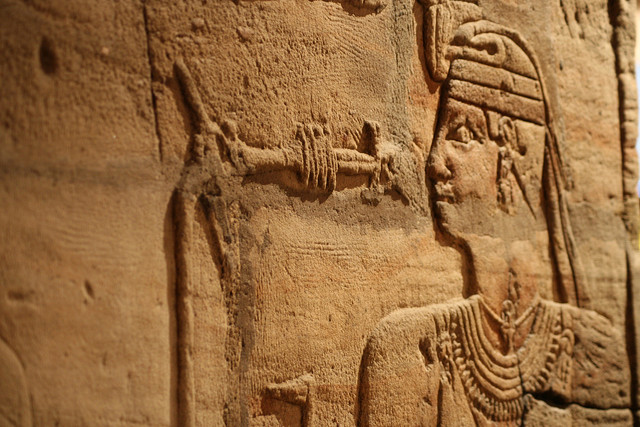
and this while your at it.. as this look like something inside it what is it ??
the EXPERTS of Egyptology cant !!
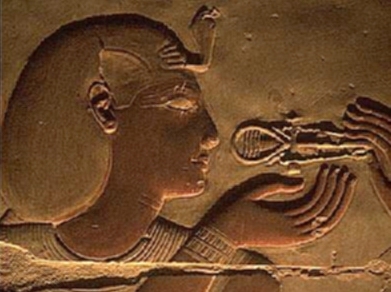
Neither of these look like HORNS!! aka Cones ...
Thousand of Years !! a Speaking Amp Device yeah Sure.. but nothing ive seen that look like this !
like the bulb, it seems like a Transformer of some kind IMO!!
Something like this,,, on the ends !! is what i see ...
This one is an old 12kV 30mA unit. Made by General Electric.
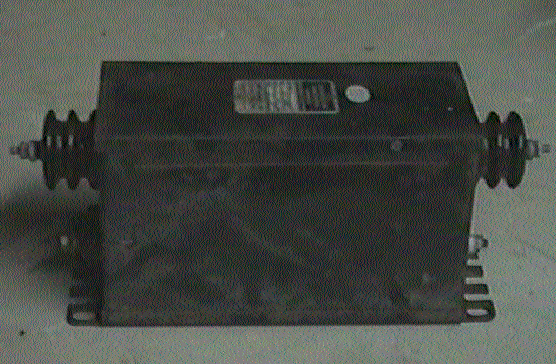
The Dendera Bulb !! has the Same thing
which there was a replica made and it worked!!
looks pretty much the same thing to me .. or a Copper Electric Coil!!
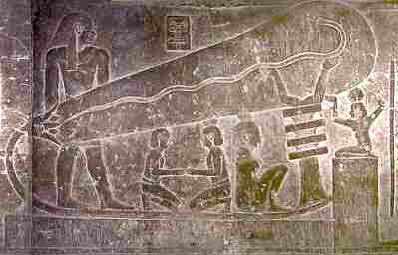
only if the Egyptians could make something so simple as this HUH!!
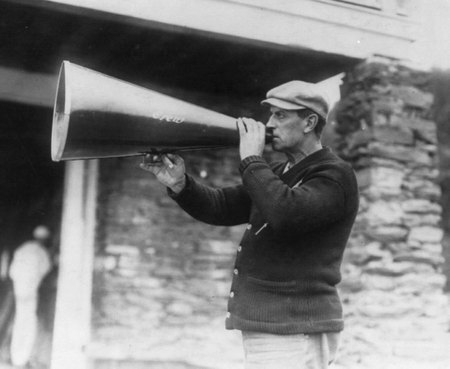
insted of this

I guess your telling ATS there telling it Wrong .. OK I got IT...
reply to post by Wolfenz
Sorry but I have absolutely no idea,prior to about two days ago I'd never seen those photos.What I do know is that mankind only properly started to understand and safely use electricity about 150 years ago.If the Egyptians were using it,we'd have some evidence of how they generated,stored,transmitted and used it.As far as I'm aware there is exactly no evidence at all that the ancient Egyptians used electricity for anything at all.They'd have made a hell of song and dance about if they had done so,and instead of some very ambiguous images that could possibly be electrically powered devices and nothing else,there would have been countless drawings of how they generated/stored it etc.If they had access to some fantastic power that would have elevated them above every other civilisation on earth,do you not think they'd have made sure everyone knew about it?
They're drawings and nothing else.As I understand how they worked,the various structures were built and left blank for future artists to come and add their thoughts to a sort of timeline kinda story thing.
Just a guess,but the weird bit in or on the mouthpiece of what ever it is looks kinda like a musical reed to me.I still believe this to be just a noise making device,or at least the plans for one that was never built.
Sorry but I have absolutely no idea,prior to about two days ago I'd never seen those photos.What I do know is that mankind only properly started to understand and safely use electricity about 150 years ago.If the Egyptians were using it,we'd have some evidence of how they generated,stored,transmitted and used it.As far as I'm aware there is exactly no evidence at all that the ancient Egyptians used electricity for anything at all.They'd have made a hell of song and dance about if they had done so,and instead of some very ambiguous images that could possibly be electrically powered devices and nothing else,there would have been countless drawings of how they generated/stored it etc.If they had access to some fantastic power that would have elevated them above every other civilisation on earth,do you not think they'd have made sure everyone knew about it?
They're drawings and nothing else.As I understand how they worked,the various structures were built and left blank for future artists to come and add their thoughts to a sort of timeline kinda story thing.
Just a guess,but the weird bit in or on the mouthpiece of what ever it is looks kinda like a musical reed to me.I still believe this to be just a noise making device,or at least the plans for one that was never built.
anonentity
SLAYER69
reply to post by jimmyx
True, now what if....
We are simply seeing "Science" discovering something that is presently forgotten but was known to the Ancients based on a scientific principle they have not fully explored yet?edit on 2-12-2013 by SLAYER69 because: (no reason given)
What happens when you have a circle of the right type of stones, that are well connected to the ground. Someone starts singing in the middle, and the electrons in the crystal lattice in the mass of the stones are displaced. Since the whole shebang is set on an electrical telluric current, immersed in the magnetic field of the earth. Wouldn't that essentially act like a microphone, causing a carrier wave in the magnetic field. Which might have a few interesting effects. One being the singing could be picked up by a similar structure down the line. Or perhaps another when the energy input into the stones, is reversed it does a playback loop, the crystal lattice in the stone is incredibly similar to the way silicon chips hold information in the lattice. Geo electronics?
No it's impossible for a 20 ton stone to act as a microphone I'm afraid.The diaphragm on a modern microphone weighs slightly more than nothing (less than 1 gram),it has to be this light to be sensitive enough to be able to pick the minute changes in air pressure from any "normal" sound that human ears can withstand.As I have said already several times in this thread (and both have been ignored),it would need so much energy to get these stones to resonate that any human eardrums within several 100 meters would be instantly and permanently damaged.
A carrier wave has to be generated in a stable manner,and then the audio has to be modulated onto it.There is no known way that nature can do this,we have to use electronic circuits to modulate a carrier wave and then transmit it,and the reverse at the other end to receive and de-modulate it.
An unpowered loudspeaker can "sing" (techically known as sympathetic resonance) if it is energised by sound waves at it's resonant frequency,but again it will only respond to a narrow band and not to full range.But again this is with lightweight and sensitive paper coned speakers,this can never happen with stones,no matter how many times you use the magic word "crystal".
reply to post by Imagewerx
Here you go.
For what it's worth. I'd recommend watching the whole series from beginning to end
Here you go.
For what it's worth. I'd recommend watching the whole series from beginning to end
Imagewerx
anonentity
SLAYER69
reply to post by jimmyx
True, now what if....
We are simply seeing "Science" discovering something that is presently forgotten but was known to the Ancients based on a scientific principle they have not fully explored yet?edit on 2-12-2013 by SLAYER69 because: (no reason given)
What happens when you have a circle of the right type of stones, that are well connected to the ground. Someone starts singing in the middle, and the electrons in the crystal lattice in the mass of the stones are displaced. Since the whole shebang is set on an electrical telluric current, immersed in the magnetic field of the earth. Wouldn't that essentially act like a microphone, causing a carrier wave in the magnetic field. Which might have a few interesting effects. One being the singing could be picked up by a similar structure down the line. Or perhaps another when the energy input into the stones, is reversed it does a playback loop, the crystal lattice in the stone is incredibly similar to the way silicon chips hold information in the lattice. Geo electronics?
No it's impossible for a 20 ton stone to act as a microphone I'm afraid.The diaphragm on a modern microphone weighs slightly more than nothing (less than 1 gram),it has to be this light to be sensitive enough to be able to pick the minute changes in air pressure from any "normal" sound that human ears can withstand.As I have said already several times in this thread (and both have been ignored),it would need so much energy to get these stones to resonate that any human eardrums within several 100 meters would be instantly and permanently damaged.
A carrier wave has to be generated in a stable manner,and then the audio has to be modulated onto it.There is no known way that nature can do this,we have to use electronic circuits to modulate a carrier wave and then transmit it,and the reverse at the other end to receive and de-modulate it.
An unpowered loudspeaker can "sing" (techically known as sympathetic resonance) if it is energised by sound waves at it's resonant frequency,but again it will only respond to a narrow band and not to full range.But again this is with lightweight and sensitive paper coned speakers,this can never happen with stones,no matter how many times you use the magic word "crystal".
Thanks for the correction i'm not into electronics, But you still have a circle of semiconductors, with a fluctuating dc. charge going through them as the Telluric current rises and falls with the diurnal rhythms, all wrapped up in a magnetic field. With the whole place run by people who have golden witches hats with the full metonic cycle of the moon etched on to them for some reason. www.en.wikipedia.org... Telluric Current prediction? It strikes me that in certain conditions the electrons would build up as static on the surface. If your inside the stones when the effect is at its highest, surrounded by a mist of electrons, knowing the electron has virtually no mass and exhibits "strangeness " with regard to its quantum effect. I cant help but think combined PK effect?. Just saying. Its for something.
You might also add in that its known by the recovery of a dead body that the place was taboo and guarded with lethal force. I think he had about three flint arrow heads in him when he was excavated.
edit on 5-12-2013 by anonentity because: (no reason given)
Imagewerx
reply to post by Wolfenz
Sorry but I have absolutely no idea,prior to about two days ago I'd never seen those photos.What I do know is that mankind only properly started to understand and safely use electricity about 150 years ago.If the Egyptians were using it,we'd have some evidence of how they generated,stored,transmitted and used it.As far as I'm aware there is exactly no evidence at all that the ancient Egyptians used electricity for anything at all.They'd have made a hell of song and dance about if they had done so,and instead of some very ambiguous images that could possibly be electrically powered devices and nothing else,there would have been countless drawings of how they generated/stored it etc.If they had access to some fantastic power that would have elevated them above every other civilisation on earth,do you not think they'd have made sure everyone knew about it?
They're drawings and nothing else.As I understand how they worked,the various structures were built and left blank for future artists to come and add their thoughts to a sort of timeline kinda story thing.
Just a guess,but the weird bit in or on the mouthpiece of what ever it is looks kinda like a musical reed to me.I still believe this to be just a noise making device,or at least the plans for one that was never built.
there would have been countless drawings of how they generated/stored it etc.
yes there would of been !
.If they had access to some fantastic power that would have elevated them above every other civilisation on earth,do you not think they'd have made sure everyone knew about it?
do you not think they'd have made sure everyone knew about it?
Ok Question Speaking Reveling Secrets!! Did the USA Reveal about the Atomic Bomb the Blueprints! of making it ! well before Spy's gave it to the Russians... NO They kept it to themselves Governments to it all the time hidden from the Public !! And Ancient Egypt Public was Slaves and their Handlers not the Nobles or Royalty's of Egypt as they were consider like GODS!!! at one point !
OK Ill bite on this!! instead of carved in stone it may of been written on papyrus !
and all of the Unsolved mysteries of Ancient Egypt could of been explained !!
The Legendary Library of Alexandria Could of Held these Scrolls of Information !!
take a Pick a Site..
Library of Alexandria
www.britannica.com...
Library of Alexandria
en.wikipedia.org...
Library of Alexandria
The famous burning of the Library of Alexandria, including the incalculable loss of ancient works, has become a symbol of the irretrievable loss of public knowledge. Although there is a mythology of "the burning of the Library at Alexandria", the library may have suffered several fires or acts of destruction of varying degrees over many years. Ancient and modern sources identify several possible occasions for the partial or complete destruction of the Library of Alexandria.[20]
en.wikipedia.org...
THE ANCIENTS
Alexandria's Famous Library
www.thelivingmoon.com...
Just a guess,but the weird bit in or on the mouthpiece of what ever it is looks kinda like a musical reed to me.I still believe this to be just a noise making device,or at least the plans for one that was never built.
plans for one that was never built??? WHAT ?? OMG LOL ..
yet as I shown in a few previous post there are many of these devices
close to the same thing so obviously it was built and Exactly a NOISE Making Device of some Kind
When Chanting to a High Frequency or Low Frequency Through it ? just saying !
or a Cadence Song for the Worker/slaves Rhythm of the Beat.. Who Knows !
In case you missed this
Ashmolean Museum
The Shrine of Taharqa
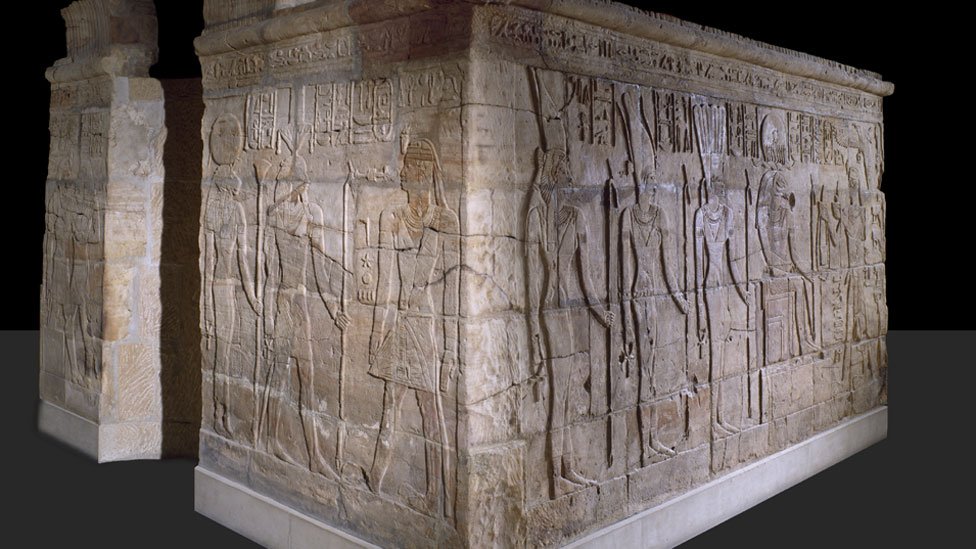
as you see a different Person is holding the Staff of this device close to the Mouth of Another Person
as to WHY ?? and look like the Staff of this Device it touching the Ground ! a Curious too Wonder if a Such a Device was Ever Found ?? in the Dig Sites to untouched Tombs ! or Perhaps it was but it was categorized as something else as Jewelry ? Maybe..
edit on 5-12-2013 by Wolfenz because: (no reason given)
edit on 5-12-2013 by Wolfenz because: (no reason given)
reply to post by SLAYER69
Very interesting Slayer!
I wonder if there is a connection to the sounds of bells used in church towers.
soulwaxer
Very interesting Slayer!
I wonder if there is a connection to the sounds of bells used in church towers.
soulwaxer
reply to post by Wolfenz
I think that we could be looking at something like Nathan Stublefields ground telephone system. They had batteries, they could work copper. As far as the average Joe went it could have been a magical communication system. Communication would be have been key to running a coherent society. www.en.wikipedia.org...
I think that we could be looking at something like Nathan Stublefields ground telephone system. They had batteries, they could work copper. As far as the average Joe went it could have been a magical communication system. Communication would be have been key to running a coherent society. www.en.wikipedia.org...
reply to post by SLAYER69
Thank you Slayer69,I'll gradually work my way through them when I get the time.
Thank you Slayer69,I'll gradually work my way through them when I get the time.
reply to post by anonentity
There is no circle of semiconductors,maybe you have them confused with resistors? The raw ingredients for them can of course be found in their basic state in nature,but they can't ever become semiconductors until they are put through a VERY carefully controlled procedure in 100% sterile conditions.Resistors can exist in nature,and I'm sure you could find evidence that certain layers of alternating conducting and insulating rocks could act as natural capacitors.Sadly I don't think we'll ever find 64 bit Snapdragon processors growing in the ground though.
I reckon even the very most sensitive measuring equipment we have would struggle to pick up any sort of charge in these rocks,and there's no way a person standing in the middle of an unfinished and so almost random collection of stones would be able to feel anything real if they were taken there in a blind test.
There is no circle of semiconductors,maybe you have them confused with resistors? The raw ingredients for them can of course be found in their basic state in nature,but they can't ever become semiconductors until they are put through a VERY carefully controlled procedure in 100% sterile conditions.Resistors can exist in nature,and I'm sure you could find evidence that certain layers of alternating conducting and insulating rocks could act as natural capacitors.Sadly I don't think we'll ever find 64 bit Snapdragon processors growing in the ground though.
I reckon even the very most sensitive measuring equipment we have would struggle to pick up any sort of charge in these rocks,and there's no way a person standing in the middle of an unfinished and so almost random collection of stones would be able to feel anything real if they were taken there in a blind test.
edit on 6-12-2013 by Imagewerx because: (no reason given)
reply to post by Wolfenz
Even if the plans were lost during the fire at the library of Alexander,there'd still be physical evidence of these devices,of which I've yet to see any trace?
I'm by no means an expert on this subject,so I am willing enough to be educated by those who do have empircal evidence that what we believe today is wrong.
Even if the plans were lost during the fire at the library of Alexander,there'd still be physical evidence of these devices,of which I've yet to see any trace?
I'm by no means an expert on this subject,so I am willing enough to be educated by those who do have empircal evidence that what we believe today is wrong.
Imagewerx
reply to post by anonentity
There is no circle of semiconductors,maybe you have them confused with resistors? The raw ingredients for them can of course be found in their basic state in nature,but they can't ever become semiconductors until they are put through a VERY carefully controlled procedure in 100% sterile conditions.Resistors can exist in nature,and I'm sure you could find evidence that certain layers of alternating conducting and insulating rocks could act as natural capacitors.Sadly I don't think we'll ever find 64 bit Snapdragon processors growing in the ground though.
I reckon even the very most sensitive measuring equipment we have would struggle to pick up any sort of charge in these rocks,and there's no way a person standing in the middle of an unfinished and so almost random collection of stones would be able to feel anything real if they were taken there in a blind test.edit on 6-12-2013 by Imagewerx because: (no reason given)
Who knows no one has ever been taken there in a blind test. The fact that trees have a DC voltage which can charge a cell phone or light a LED. Does rather suggest something could have gone on with regards to DC. low voltage. The effect of lightening is a capacitance discharge which naturally occurs. Here's some new research that suggest that rocks under certain circumstances exhibit some otherwise unknown effects. www.american-marconi.org...
edit on 6-12-2013 by anonentity because: (no reason given)
Who has ever been to stonehenge at the solstice? It becomes a meeting point of energised souls and one of the only times you can get inside the
circle, touch the stones, with all the loons, drums, dancing, festivities, IT IS AWESOME, and that in itself is special, unifying and reconnects you
with the earth. Maybe its not that complicated, maybe it was a good place for a banging gathering and the architect was familiar with the properties
of the stones when combined with the instruments of the time? RESONANCE
edit on 7-12-2013 by Fatmandy because: (no reason
given)
edit on 7-12-2013 by Fatmandy because: (no reason given)
reply to post by Wolfenz
This...
is quite interesting.
And so is this from leolady.
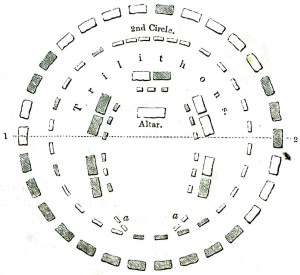
Stonehenge strikes me as a feat of engineering, rather than just a design. Like it truly had a practical purpose, as well as a significance to the people of the time. Beliefs may have played a big part of our ancestors lives, but I think there was more science going on back then than we have given them credit for.
This...
is quite interesting.
And so is this from leolady.

Stonehenge strikes me as a feat of engineering, rather than just a design. Like it truly had a practical purpose, as well as a significance to the people of the time. Beliefs may have played a big part of our ancestors lives, but I think there was more science going on back then than we have given them credit for.
edit on 12/7/2013 by Klassified because: wrong picture
reply to post by anonentity
I hope it doesn't seem like I'm picking holes in everything you say.But.......trees can generate nowhere near the 3-4 volts required to charge cellphone batteries by themselves.They struggle to get more than a few 100 millivolts (0.1-0.3 volts) and can only do any useful work if this low voltage is then fed to some sort of DC-DC convertor step-up circuit.It'd be the end to all our energy problems if we could plug our fridge,microwave,washing machine,TV set,computer and phone chargers into the Oak tree in our front garden,but that ain't going to happen anytime soon so for now we'll have to dream about signing up with the new Evergreen or Conifer energy company.
Lightning is nothing to do with capacitance.A capacitor is a storage device and can't generate any energy of it's own,it can only release VERY quickly what's already been put into it.Lightning is caused by a massive potential difference between the top and bottom of thunder clouds,which are a LOT LOT deeper than normal every day clouds which can't generate the PD needed to break down the insulation of air.
The "new" research about rocks that generate electricity isn't new at all.The fact the earth behaves like a giant piezoelectric crystal (they generate voltage when you bend them) just before an earthquake has been known for a long time,and is so intense it can even be picked up cattle and animals before the earthquake has even taken place.
Oh yes and of course the original point of this thread.Stonehenge,I've been there and it's just a load of rocks.Or a building site where the builders left before it was finished.
I hope it doesn't seem like I'm picking holes in everything you say.But.......trees can generate nowhere near the 3-4 volts required to charge cellphone batteries by themselves.They struggle to get more than a few 100 millivolts (0.1-0.3 volts) and can only do any useful work if this low voltage is then fed to some sort of DC-DC convertor step-up circuit.It'd be the end to all our energy problems if we could plug our fridge,microwave,washing machine,TV set,computer and phone chargers into the Oak tree in our front garden,but that ain't going to happen anytime soon so for now we'll have to dream about signing up with the new Evergreen or Conifer energy company.
Lightning is nothing to do with capacitance.A capacitor is a storage device and can't generate any energy of it's own,it can only release VERY quickly what's already been put into it.Lightning is caused by a massive potential difference between the top and bottom of thunder clouds,which are a LOT LOT deeper than normal every day clouds which can't generate the PD needed to break down the insulation of air.
The "new" research about rocks that generate electricity isn't new at all.The fact the earth behaves like a giant piezoelectric crystal (they generate voltage when you bend them) just before an earthquake has been known for a long time,and is so intense it can even be picked up cattle and animals before the earthquake has even taken place.
Oh yes and of course the original point of this thread.Stonehenge,I've been there and it's just a load of rocks.Or a building site where the builders left before it was finished.
anonentity
reply to post by Wolfenz
I think that we could be looking at something like Nathan Stublefields ground telephone system. They had batteries, they could work copper. As far as the average Joe went it could have been a magical communication system. Communication would be have been key to running a coherent society. www.en.wikipedia.org...
More Less like this !
Tesla Wireless Ground electrical Current as he had done around his Lab and thought practically the Whole town were his lab was as stick a light bulb anywhere in the ground and presto it lights up!
Right Real Magic...
Skip to 1:30 mark
How Wireless Power Works
by Tracy V. Wilson
Resonance and Wireless Power
electronics.howstuffworks.com...
Long-distance Wireless Power
electronics.howstuffworks.com...
Now where is the Egyptian Power House the Generator / Transmitter
Pyramid = Electric Generator
www.abovetopsecret.com...
So that's an Idea
but what devices built the Pyramids what Moved the Stones .. is still in Question ...
unless something else we haven't discovered ( unearthed ) yet?
Still the Stonehenge is still a mystery of who and How the monolith Stones were put there ...
Magic indeed ... till we find a scientific Answer..
Just Maybe Tesla Found the Secrets !!
Klassified
reply to post by Wolfenz
This...
is quite interesting.
And so is this from leolady.
Stonehenge strikes me as a feat of engineering, rather than just a design. Like it truly had a practical purpose, as well as a significance to the people of the time. Beliefs may have played a big part of our ancestors lives, but I think there was more science going on back then than we have given them credit for.
edit on 12/7/2013 by Klassified because: wrong picture
Agreed ...
The Ank (Copper? ) with the Djed ( Conductor ?) with a Staff with a Fork on the Bottom like a Tuning Fork that is (Amplifier?)
Stonehenge a feat of Engineering is right thousand of years ago.. a Purpose Calender An A Farmers Almanac i would tend to think... To the Cosmos of Astrology to Time and Date For Seasoned Harvest of Solstice Calender... and other Events...
but speaking of Astronomy the New World had observatory before whit man came and Solstice calenders too
El Caracol ("The Snail") is located to the north of Las Monjas. It is a round building on a large square platform. It gets its name from the stone spiral staircase inside. The structure, with its unusual placement on the platform and its round shape (the others are rectangular, in keeping with Maya practice), is theorized to have been a proto-observatory with doors and windows aligned to astronomical events, specifically around the path of Venus as it traverses the heavens
www.flickr.com...
El Caracol, Chichen Itza
en.wikipedia.org...
Tiwanaku Calendar - Atlantis Bolivia
www.atlantisbolivia.org...
new topics
-
The Truth about Migrant Crime in Britain.
Social Issues and Civil Unrest: 11 minutes ago -
Trudeau Resigns! Breaking
Other Current Events: 2 hours ago -
Live updates: Congress meets to certify Trump's presidential election victory
US Political Madness: 3 hours ago -
Gravitic Propulsion--What IF the US and China Really Have it?
General Conspiracies: 3 hours ago -
Greatest thing you ever got, or bought?
General Chit Chat: 3 hours ago
top topics
-
Trudeau Resigns! Breaking
Other Current Events: 2 hours ago, 17 flags -
OK this is sad but very strange stuff
Paranormal Studies: 14 hours ago, 9 flags -
Live updates: Congress meets to certify Trump's presidential election victory
US Political Madness: 3 hours ago, 8 flags -
Islam And A Book Of Lies
Religion, Faith, And Theology: 15 hours ago, 6 flags -
Gravitic Propulsion--What IF the US and China Really Have it?
General Conspiracies: 3 hours ago, 6 flags -
Greatest thing you ever got, or bought?
General Chit Chat: 3 hours ago, 3 flags -
The Truth about Migrant Crime in Britain.
Social Issues and Civil Unrest: 11 minutes ago, 1 flags
active topics
-
Musk calls on King Charles III to dissolve Parliament over Oldham sex grooming gangs
Mainstream News • 190 • : Oldcarpy2 -
Trudeau Resigns! Breaking
Other Current Events • 44 • : atsalex2 -
The Truth about Migrant Crime in Britain.
Social Issues and Civil Unrest • 0 • : gortex -
Islam And A Book Of Lies
Religion, Faith, And Theology • 11 • : charlest2 -
Greatest thing you ever got, or bought?
General Chit Chat • 11 • : Flyingclaydisk -
-@TH3WH17ERABB17- -Q- ---TIME TO SHOW THE WORLD--- -Part- --44--
Dissecting Disinformation • 3949 • : Thoughtful3 -
Winter Storm
Fragile Earth • 42 • : Oldcarpy2 -
OK this is sad but very strange stuff
Paranormal Studies • 5 • : Ravenwatcher -
Joe Biden gives the USA's Highest Civilian Honor Award to Hillary Clinton and George Soros.
US Political Madness • 54 • : mysterioustranger -
Speaking of Pandemics
General Conspiracies • 10 • : mysterioustranger

